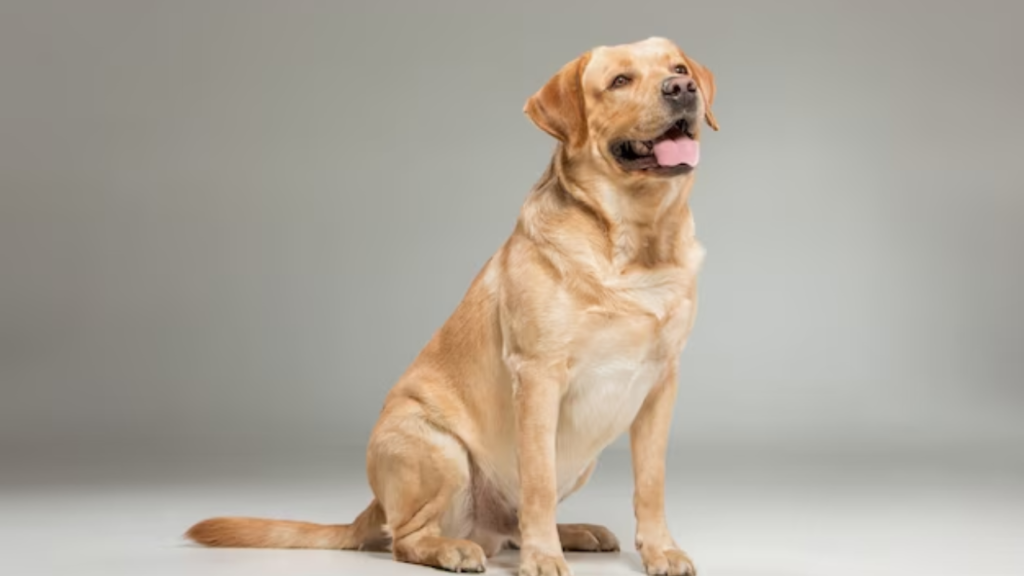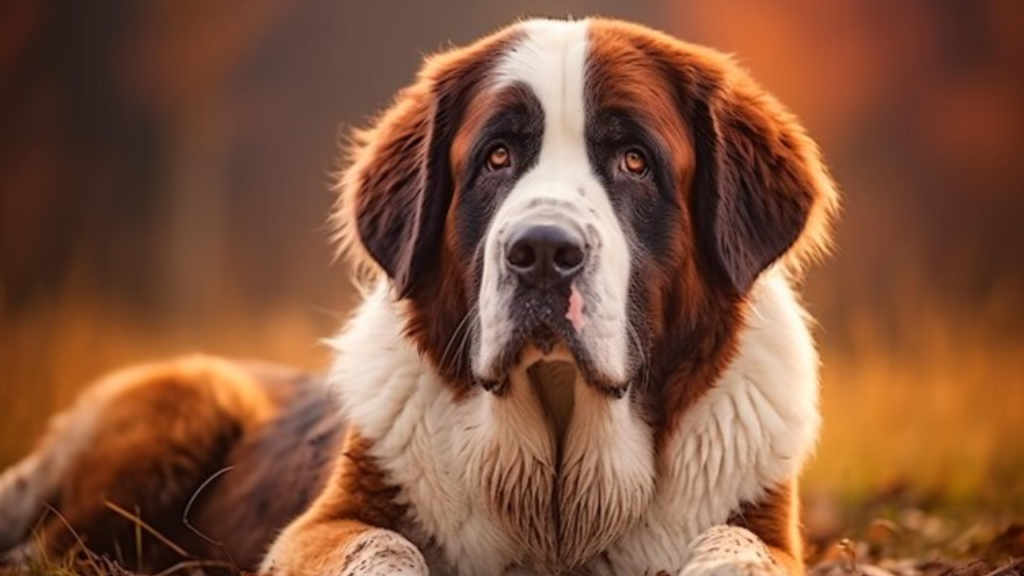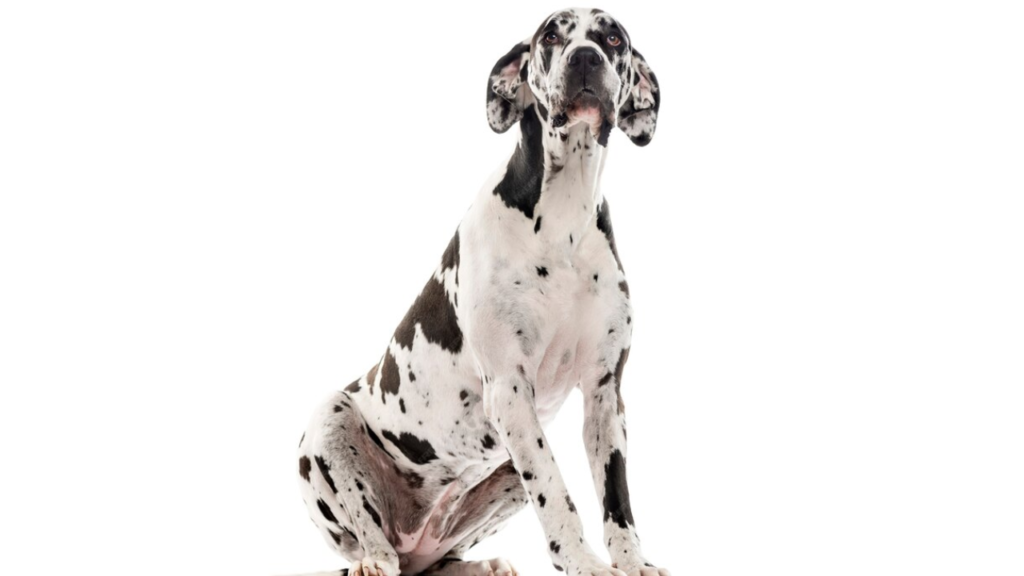Understanding the main Large Dog Breeds is essential for families looking to add a new member to their household. Large dog breeds are not only loyal companions, but they also provide protection and joy to their owners.
This article presents the best options for Large Dog Breeds, considering their characteristics, temperament, and care requirements, helping you choose the ideal dog for your family.
Choosing the right dog can make all the difference in family life. Large Dog Breeds, such as the Labrador Retriever and the Saint Bernard, are not just beautiful; they possess temperaments that can adapt to different lifestyles. Moreover, it’s important to understand the responsibilities associated with owning a large dog, such as space, food, and exercise needs.
So, continue exploring this article and learn more about your best friend. Whether you are a dog lover or a family looking for a new pet, the information presented here is crucial for you.
Top 1 – Labrador Retriever

The Labrador Retriever is one of the most popular Large Dog Breeds in Brazil. Known for its intelligence and friendly nature, it is an excellent choice for families. They adapt well to different environments and are great with children. Additionally, they require regular exercise to maintain health and avoid boredom.
Key Characteristics: Labradors are known for being highly trainable and often excel in obedience competitions. They have a natural instinct for retrieving, making them excellent working dogs in search and rescue services. Their balanced and sociable temperament makes them friendly even with strangers.
Behavior and Personality: This breed is extremely loyal and forms a strong bond with its owners. They love being around people and are known for their playful and energetic nature. Furthermore, Labradors tend to be very adaptable, doing well in apartments, provided they receive daily exercise, as well as in homes with yards.
Health and Longevity: Labradors have an average lifespan of 10 to 12 years but can be prone to health issues such as hip dysplasia and obesity. A balanced diet and regular veterinary visits are essential to ensure the long-term health of this breed.
Top 2 – Saint Bernard

The Saint Bernard is famous for its impressive size and gentle character. Originating from the Alpine mountains, they are known for being protective and affectionate. These dogs thrive in family environments and are known for their patience with children.
Key Characteristics: The Saint Bernard’s coat is dense and water-resistant, helping them endure cold climates. They are known for their ability to work in rescue teams, especially in snowy conditions. Their imposing and friendly presence makes them excellent companions, particularly in active households.
Behavior and Personality: Although large, Saint Bernards have a calm and loving temperament. They are known for being gentle and extremely affectionate, making them great for families with children. However, their size requires proper socialization from a young age to ensure they develop good habits.
Health and Longevity: The lifespan of Saint Bernards ranges from 8 to 10 years. Due to their size, they are prone to health issues such as hip dysplasia and heart problems. Maintaining a healthy weight and a moderate exercise regimen can help prolong this breed’s life.
Top 3 – Great Dane

The Great Dane, or German Mastiff, is a breed known for its majestic stature. They are loyal and protective, making them great companions. Despite their size, Great Danes are known to be surprisingly gentle.
Key Characteristics: Great Danes have a short lifespan, averaging 7 to 10 years, which may be surprising given their size. They have a short coat that requires little maintenance but need special attention to their health, especially their digestive system, which is prone to bloat.
Behavior and Personality: Despite their intimidating appearance, Great Danes are often referred to as “gentle giants.” They are extremely affectionate with their families and can be quite playful. They get along well with children and are known for their patient nature, but they need proper socialization from puppyhood.
Health and Longevity: Great Danes are prone to a range of health issues, including heart and orthopedic problems. Monitoring their diet and exercise is crucial to prevent obesity, which can further shorten their lifespan.
Top 4 – Golden Retriever

Golden Retrievers are known for their friendly and intelligent nature. They are great with children and can be trained for various tasks, including search and rescue. They are very social and adapt well to family life.
Key Characteristics: With a thick, golden coat, Golden Retrievers require regular grooming to avoid tangles and remove loose hair. They are highly energetic and need plenty of exercise to prevent destructive behaviors. Additionally, this breed is often used as therapy dogs due to their gentle nature.
Behavior and Personality: Golden Retrievers are known for being extremely loyal and affectionate. They have a friendly disposition and are always eager to please, making them easily trainable. Socialization from a young age is essential to ensure they behave well around other dogs and people.
Health and Longevity: The average lifespan of a Golden Retriever is about 10 to 12 years. They can be prone to health issues such as hip dysplasia and certain types of cancer. Maintaining a regular exercise regimen and veterinary check-ups is vital for a long, healthy life.
Top 5 – German Shepherd

German Shepherds are highly intelligent and versatile dogs. They are frequently used in work roles, such as police and rescue dogs. They are loyal and protective, making them excellent guard dogs.
Key Characteristics: German Shepherds have a natural instinct for protection, making them ideal for security and search services. They are very active and need daily exercise to maintain mental and physical health. Their double coat requires regular brushing, especially during shedding periods.
Behavior and Personality: This breed is very sociable but can also be reserved with strangers, making them an excellent choice for protection. German Shepherds are intelligent and can quickly learn commands and tricks, but they require consistent training. They thrive in environments that offer physical and mental challenges.
Health and Longevity: The average lifespan of German Shepherds is approximately 9 to 13 years. They are prone to health issues such as hip dysplasia and heart conditions. A balanced diet and adequate exercise are essential for maintaining their health.
Top 6 – English Mastiff

The English Mastiff is one of the largest dogs in the world, known for its gentle temperament. They are great with children and protective of their families. Despite their size, they are relatively calm and adapt well to family environments.
Key Characteristics: Mastiffs have a short, thick coat that requires little maintenance. They are known for their calm nature and require less exercise than other large breeds. These dogs generally prefer being near their owners and are very loyal.
Behavior and Personality: This breed is known for being very affectionate and protective. Despite their intimidating size, they are very good with children and can be quite playful. Socialization is important to ensure they behave well around other dogs and people.
Health and Longevity: The average lifespan of Mastiffs is 6 to 10 years, and they are prone to health issues such as hip dysplasia and heart disease. A healthy lifestyle and regular veterinary visits can help prolong their life.
Top 7 – Newfoundland

Newfoundlands are known for their swimming ability and affectionate character. They are excellent for families and are known to be very gentle with children. These dogs are often used in water rescue services.
Key Characteristics: Newfoundlands have a thick, water-resistant coat that aids in their swimming abilities. They are large and heavy, yet extremely agile in the water. Their friendly nature makes them popular among families, and they generally get along well with other animals.
Behavior and Personality: This breed is known for being calm and loyal. Newfoundlands are very social and thrive in family settings. They need socialization from puppyhood to ensure they develop good behavior with strangers and other dogs.
Health and Longevity: The average lifespan of Newfoundlands is about 8 to 10 years. They are prone to health issues such as hip dysplasia and heart conditions. A balanced diet and regular exercise are important for their overall health.
Top 8 – Rottweiler

Rottweilers are known for their strength and courage. They are very loyal and protective of their families, making them excellent guard dogs. They are intelligent and require proper training and socialization from a young age.
Key Characteristics: Rottweilers have a muscular body and a short coat that requires little maintenance. They are versatile and can excel in various activities, from dog sports to therapy work. Their intelligence and quick learning ability make them great in obedience and training.
Behavior and Personality: Despite their intimidating image, Rottweilers are known for being affectionate and loving with their families. They need proper socialization and firm training to ensure they behave well in all situations. They are very protective and can be reserved with strangers.
Health and Longevity: The average lifespan of Rottweilers is around 8 to 10 years. They are prone to health issues such as hip dysplasia and heart diseases. Regular exercise and veterinary check-ups are essential for their health.
Top 9 – Bullmastiff

The Bullmastiff is a breed known for its protective and loyal nature. They are very affectionate with their families and are great with children. These dogs are sizable and known for being calm and balanced.
Key Characteristics: Bullmastiffs have a short coat that requires little maintenance, but they need regular exercise to maintain their health. They are known to be excellent guard dogs due to their natural protective instinct. Their muscular structure and robustness make them intimidating, yet they are generally very gentle.
Behavior and Personality: This breed is known for being very affectionate and loyal. They are great with children and get along well with other animals, although socialization from a young age is crucial. Bullmastiffs are usually calm but need regular exercise to prevent boredom.
Health and Longevity: The average lifespan of Bullmastiffs is approximately 8 to 10 years. They can be prone to health issues such as hip dysplasia and heart disease. A healthy lifestyle, including a balanced diet and regular exercise, is essential for their well-being.
Top 10 – Irish Wolfhound

Irish Wolfhounds are known for their incredible size and gentle nature. They are excellent companions and are known for being very affectionate with their families. This breed is often described as gentle giants due to their calm demeanor.
Key Characteristics: Irish Wolfhounds have a rough coat that requires regular grooming. They are known for their speed and agility, making them excellent in dog sports. Their gentle nature makes them great companions for families, particularly those with children.
Behavior and Personality: This breed is known for being very loyal and protective. Irish Wolfhounds tend to be calm and relaxed, making them great pets for families. However, they do require socialization to ensure they behave well around strangers and other animals.
Health and Longevity: The average lifespan of Irish Wolfhounds is around 6 to 8 years. They are prone to health issues such as heart conditions and bone problems. A balanced diet and regular veterinary care are crucial for their long-term health.
conclusão
In conclusion, large dog breeds offer a unique combination of loyalty, protection, and affection, making them excellent companions for families. When choosing one of these dogs, it’s essential to consider their characteristics, temperament, and specific needs, ensuring that the new family member adapts well to the home and lifestyle.
Large dog breeds, such as the Labrador Retriever and the Saint Bernard, are particularly well-suited for families with children, as they possess friendly and protective behavior. With proper care, these dogs not only enrich their owners’ lives but also provide a special bond that lasts for many years.
Moreover, it’s important to highlight that large dog breeds, such as the Rottweiler and the English Mastiff, require special attention regarding health and exercise. Caring for a large dog involves ensuring they receive proper nutrition and opportunities for physical activity.
Therefore, when choosing a breed, it’s crucial to be informed about their particularities and how they fit into family routines. Large dog breeds can be true family members, offering love and protection, but they require commitment and responsibility from their owners to thrive in a family environment.
Frequently Asked Questions
1. What are the best large dog breeds for families?
The best breeds include Labrador Retriever, Golden Retriever, and Saint Bernard as they are known for their friendly temperament and patience with children.
2. How to take care of a big dog?
Caring for a large dog involves providing regular exercise, a balanced diet and proper training.
3. Do big dogs need a lot of space?
Yes, most large dog breeds benefit from enough space to move around and play.
4. Which large dog breeds are good for beginners?
Breeds like the Labrador Retriever and Golden Retriever are recommended for beginners due to their friendly nature and ease of training.
5. How do I choose the right breed for my family?
Consider each breed’s temperament, energy level, and grooming needs to find the one that best suits your lifestyle.
